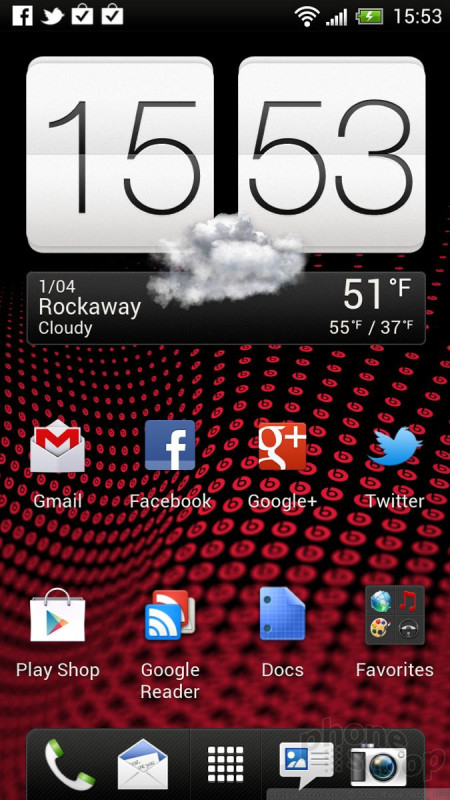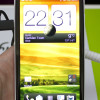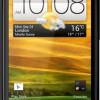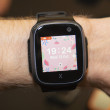Review: HTC One X for AT&T
The One X runs Android 4.0 Ice Cream Sandwich with HTC Sense 4.0. Anyone who's ever picked up an HTC Sense device will feel at home, though HTC did pull back on Sense's presence within the user interface.
First, the lock screen. As with Sense 3.0, the lock screen on the One X offers a handful of customizable shortcuts. You can set up to four apps/actions on the lock screen that will launch when you drag down down to the little ring at the bottom of the screen. The defaults are phone, mail, messages, and camera, but you can adjust these at will. Rich's favorite lock screen feature of Sense 4.0 is that you can have a camera shortcut and a passcode at the same time.
The central home screen panel (out of 7) has the familiar HTC-designed clock and weather widget, but it isn't as in-your-face as it used to be. There's far less "chrome" (decorated frames) around all the icons and elements on the screen, which leaves more breathing space between home screen items. The result is a less cluttered and less crammed look and feel to the home screens. The permanent dock at the bottom of the screen holds five app shortcuts — the same four as the lock screen, plus the main app menu. These can be customized if you wish.
The controls are a bit nettlesome, and require a bit of a learning curve for users coming from Android 2.3 and earlier. As mentioned, there are three buttons below the display: Back, Home, Multitask. The first two are self-explanatory. The Multitask button, when pressed, reveals a graphical listing of all the recently used applications.
The all-important Menu button has been removed entirely. It reappears in several different configurations (most often as a set of three vertical dots) inside apps and settings pages. Sometimes this symbol is at the top of the screen; sometimes it's in the middle of the screen; sometimes it's at the bottom. This inconsistency is disorienting and highly annoying. There's also a secondary menu tool that appears in the form of a really small triangle (in Gmail, for example). These tools are not intuitive and HTC didn't do anything to improve on them.
The main settings menu can now be accessed quickly from anywhere via a button in the notification shade. The settings screens have been re-organized into groups such as Wireless, Personal, Phone, and so on. HTC has jazzed up the appearance, but there are so many options, it takes a little while to re-learn where everything is. You can also control the basic radio settings via a home screen widget that lets you toggle Wi-Fi, Bluetooth, GPS, Sync services, and turn off automatic brightness.
The drop-down notification shade collects notification as before, but with Android 4.0 you can now dismiss individual notifications by swiping them sideways.
Applications are laid out via grids on the One X. Swipe the pages to the left and you'll eventually jump from a list of all the apps to a list of all the widgets that are available. The tool lets you see what the widget looks like and tells you how big it is (e.g., 1 x 3, 3 x 3, etc.). There are more than 100 (yes, one hundred!!!) widgets available out-of-the-box, many of which are associated with apps such as the Gmail client, or calendar, Twitter, and so on. I like this set-up for configuring widgets, because you get a sense of what each widget looks like and how big it will be before you dump it onto your home screen.
Last, on the performance front, let's set the record straight. The international version of the One X has a quad-core Tegra 3 processor, with a fifth core for menial tasks. The result is an awesome performance engine for the One X. However, the AT&T variant sports a Qualcomm Snapdragon S4 with two cores at 1.5GHz each. If you think four cores are better than two, you'd be mistaken, at least in this case.
The S4 chip is leagues faster than the Tegra 3 in every respect that we tested. It simply outperforms it, and you can tell when you use both phones side-by-side. The S4-based One X for AT&T is much, much faster. Worried about battery life differences? Don't be. The S4 One X showed better battery life across the board — even when under heavy use on AT&T's 4G LTE network.
Bottom line: Qualcomm smashed it out of the park with the S4 chip, and the One X is the first phone that really shows off just how amazing that chip is.













 Hands On with the HTC One X and Sense 4
Hands On with the HTC One X and Sense 4
 Liveblog: HTC
Liveblog: HTC
 HTC Updates the One X, Calls it the One X+
HTC Updates the One X, Calls it the One X+
 HTC One X
HTC One X




